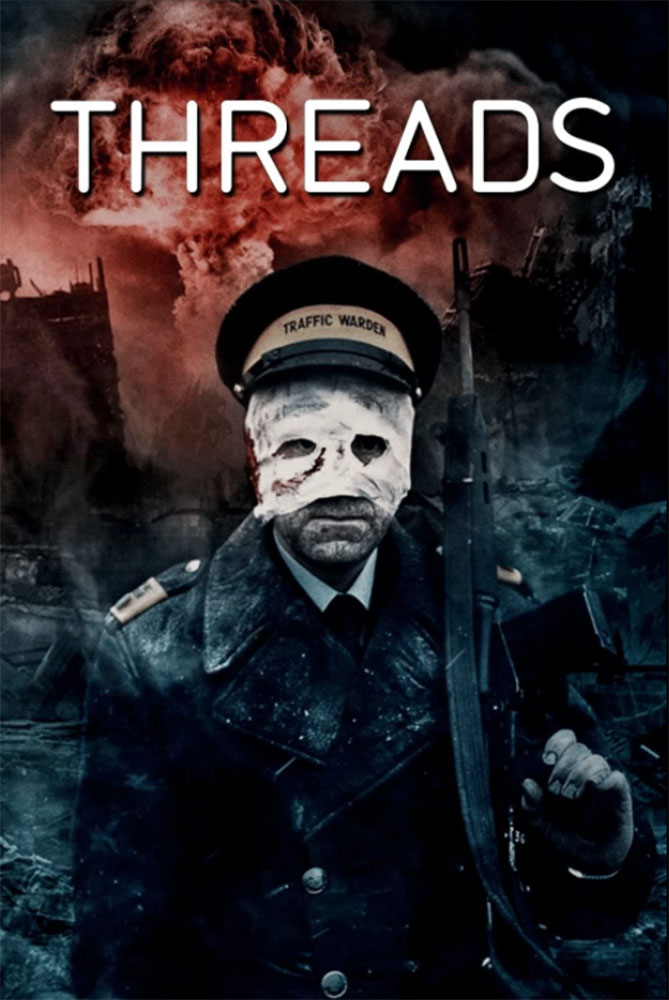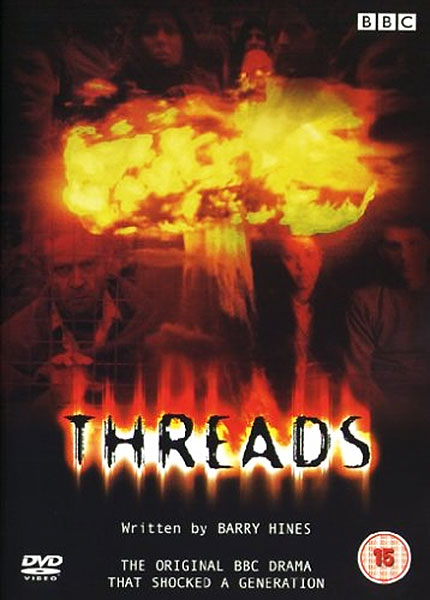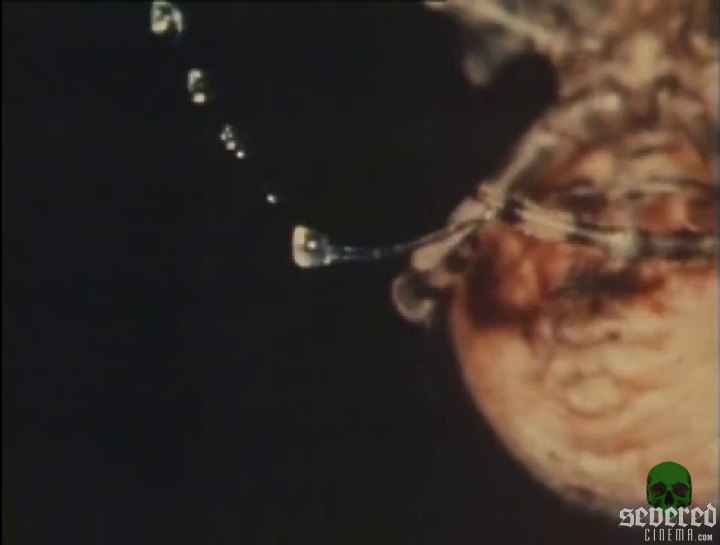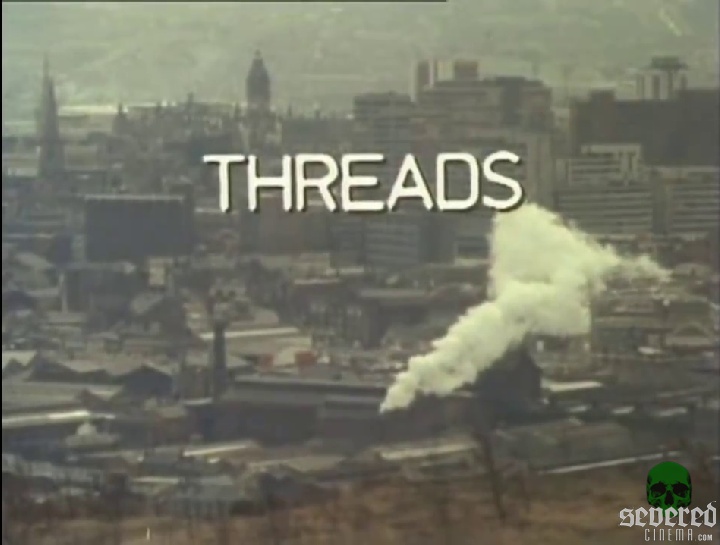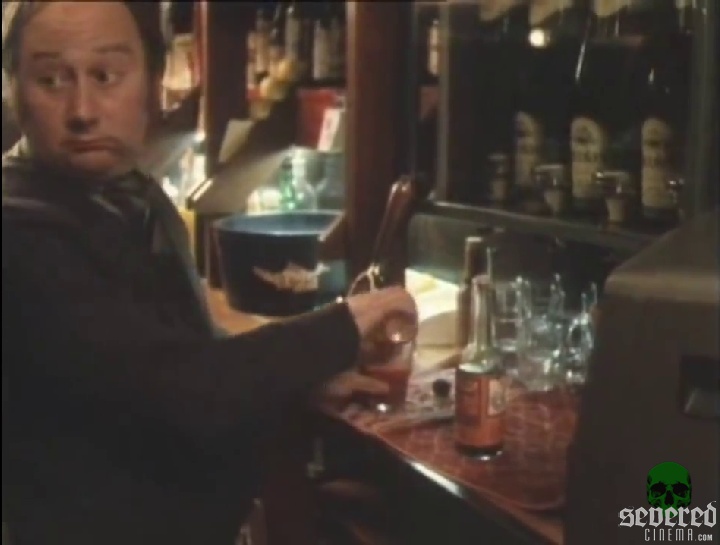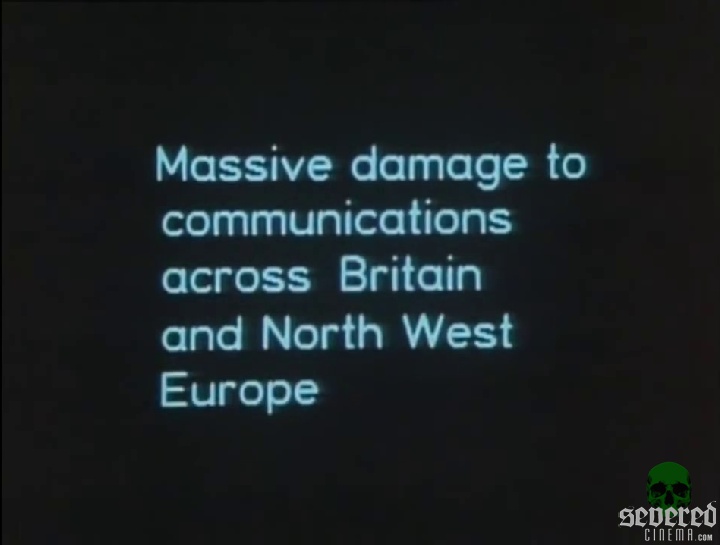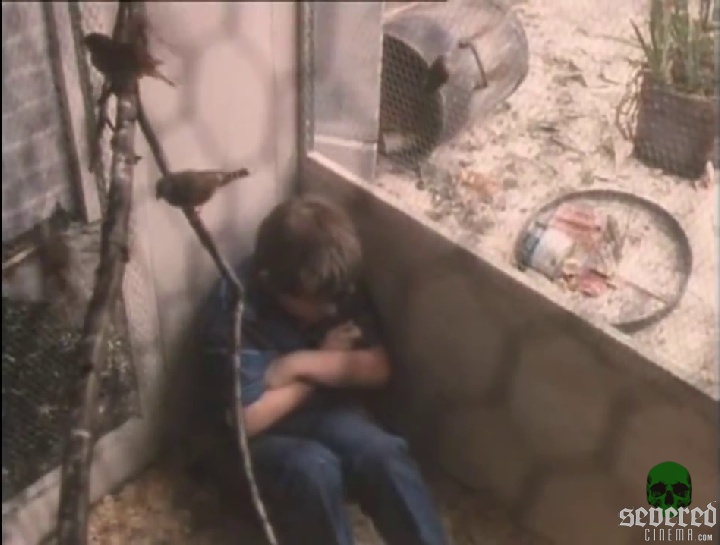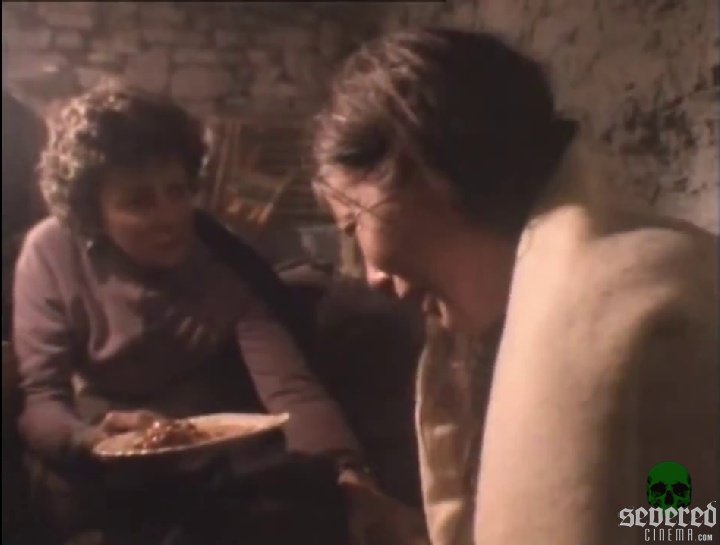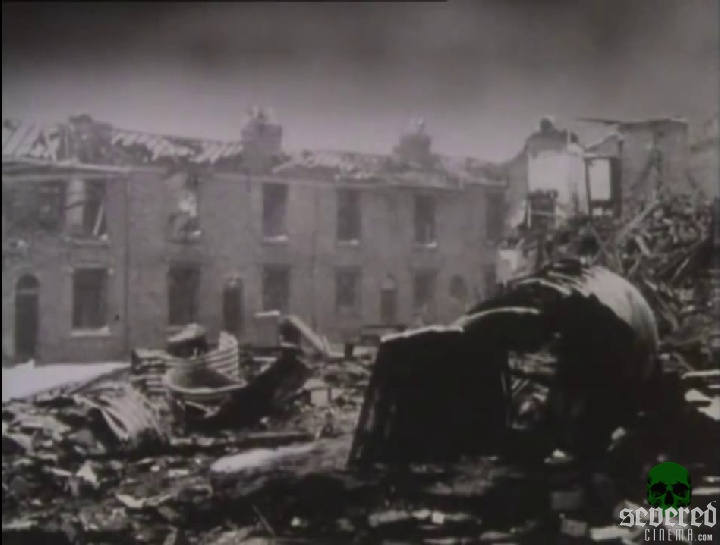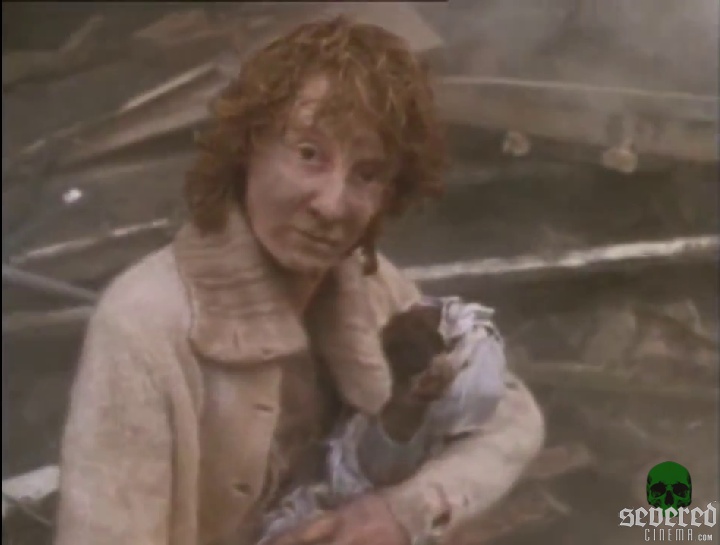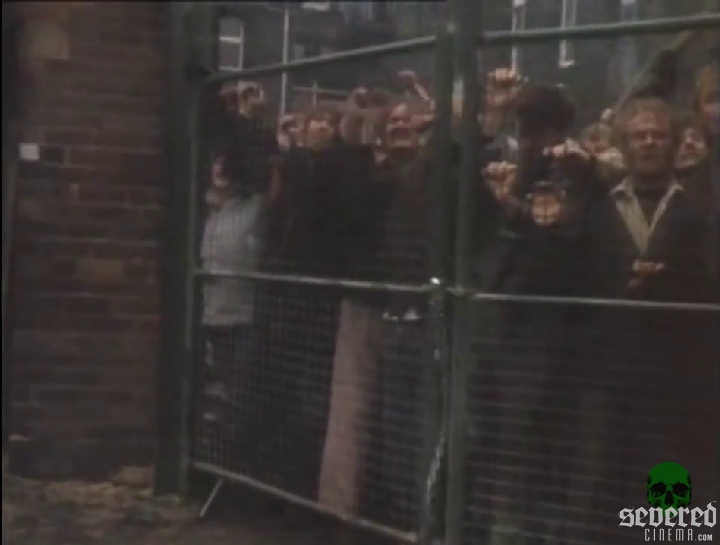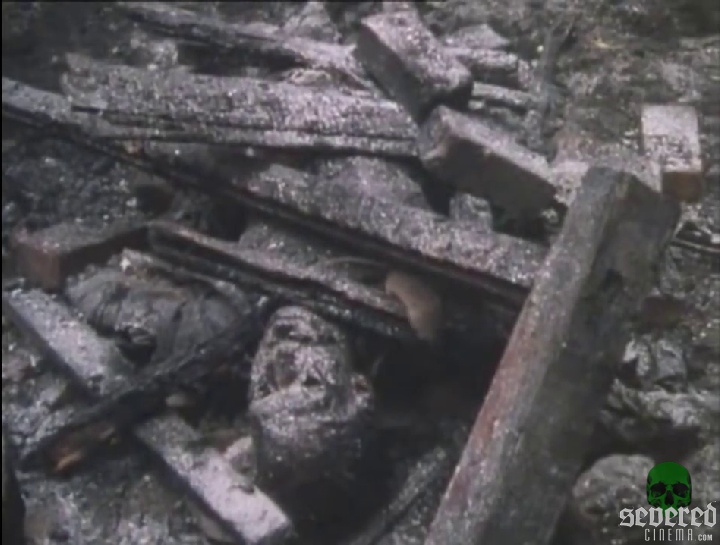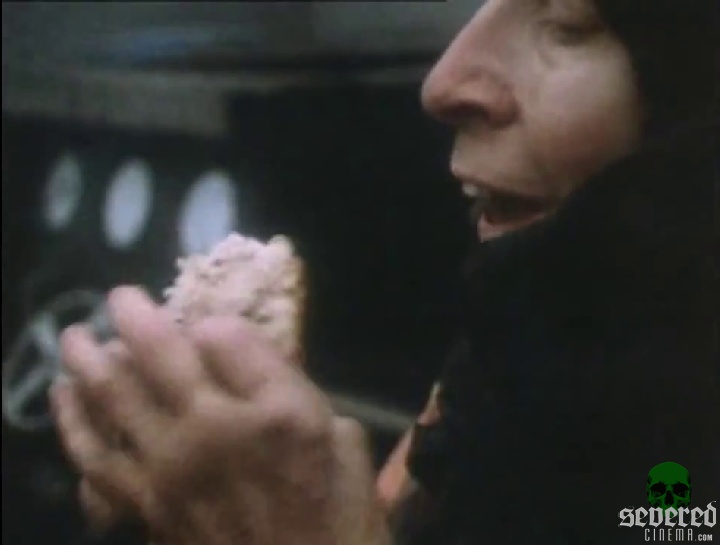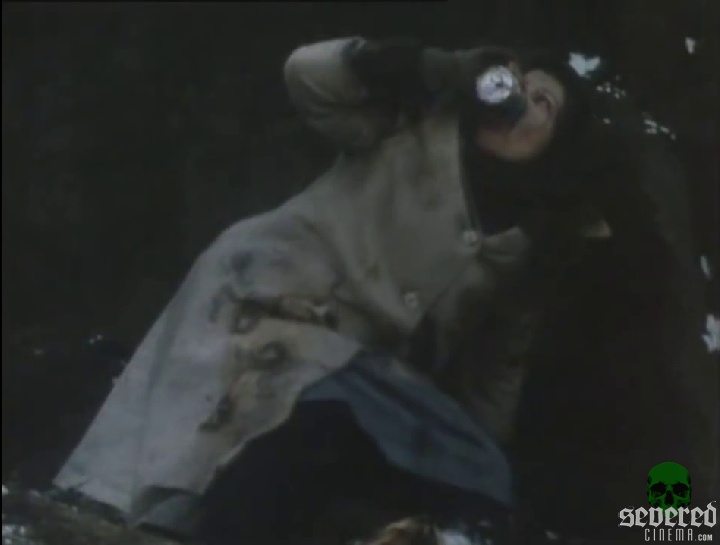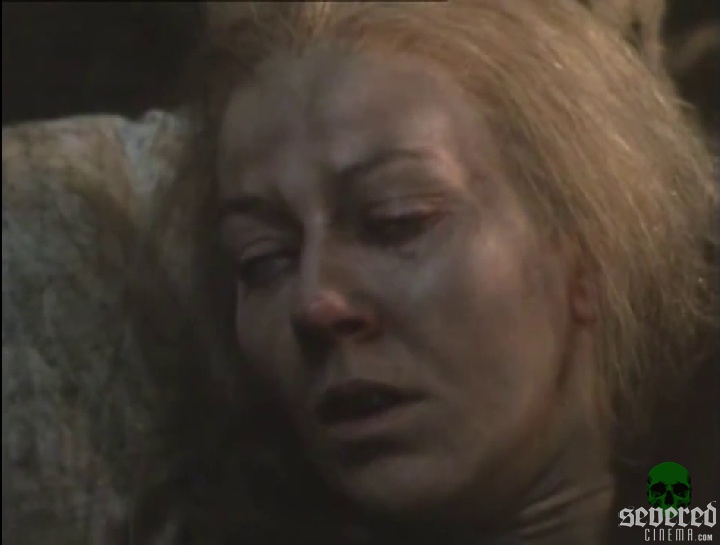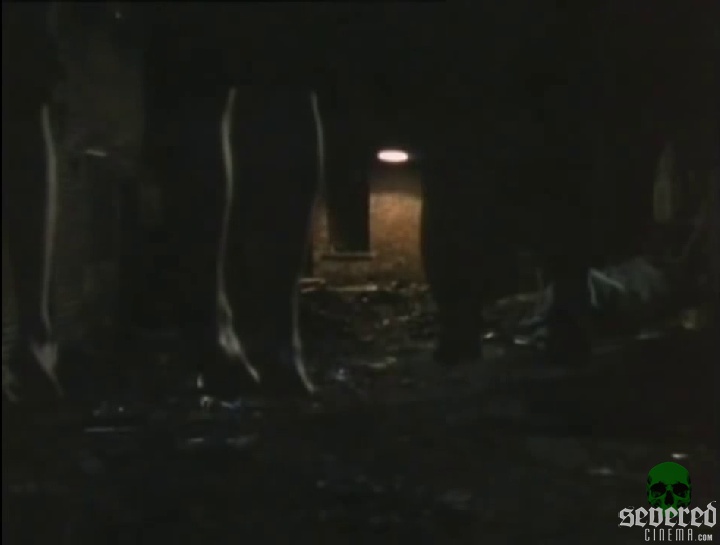Review of Threads on DVD from BBC!
I still remember back in the early eighties having vivid nightmares about mushroom clouds above my street. Probably I was aged around nine or ten, hearing rumours that the city of Hull was a target for a warhead due to our city once being a major shipping port, etcetera, so as a child it does play on you. It was on the radio, the TV, in magazines and people in the street talked about the crisis.
Then along came Threads — a BBC production so chilling, so merciless, that viewed today it still leaves an impression. The Day After was good, but retained some mellowness. When the Wind Blows is a very strong touching message, but the bad dog of nuclear holocaust movies has to be Threads.
The BBC I assume put it together just to inject sheer terror into the hearts of everyone watching. When I introduced my Horror Soulmate to this a few years ago, her face fell, literally fell. Threads pulls no punches about the aftermath of a nuclear bomb on any country remaining.
As a spider weaves its web, a narrated introduction explains just how society is a mass of threads connected and how this can basically make society weak.
Welcome to Sheffield, UK, 1984. News reports have begun to tell of building tensions in Iran between the United States and Russia. The first mention is captured briefly as a teen, Jimmy, spins his car radio dial as he sits overlooking the city with his girlfriend, Ruth. Life continues, day by day, regardless of the news. People sip in their local pub, a papergirl does her rounds, meanwhile the tabloids lap up the tension.
Jimmy discovers Ruth is pregnant so their parents all meet up, and they discuss how Jimmy wants to marry Ruth and have a place of their own.
A typed heading tells us that Sheffield is England’s third largest city with over 54,000 people living there. So as the United States hint at sending troops to Iran, the Soviet Union see that as a direct threat. Life still continues, everyone goes shopping, people go to work. We’re introduced to Clive Sutton, a man who, if war breaks out, is handed governmental powers in the city. He’s making phone calls. Nothing critical, just in case.
“The United States have accused the Soviet Union of moving warheads into their new base in Iran.” Jimmy sits in the pub watching this report and discusses it with his friend. “Don’t it scare you what it might lead to?” Jimmy says. Meanwhile Britain commits itself to the Middle East tension. Anti-War demonstrations march throughout the streets. “You cannot win a nuclear war!” shouts a woman.
One day in Iran, B-52’s attack and the Russians strike back. In Sheffield citizens are in the throes of panic buying tinned food and other items, emptying stores who are upping their prices. Then a new fight begins, Soviets versus United States all out attacks on ships. Violence erupts in the streets and many families decide to evacuate their homes. Jimmy’s father watches, “Won’t be safe anywhere.” A neighbour states, “Nothing will happen.”
Hospitals are cleared for any possible casualties. Many able patients are returned home. Panic evacuations creates chaos on the roads. Sutton goes underground with a small team beneath the town hall to form an emergency HQ. Radios and TVs hand out ‘helpful’ messages in case of an attack. “You are better off in your own home. Stay in there!”
At 8:30, one morning, the streets are busy with shoppers on their search for supplies. Sutton’s team are discussing things when the attack warning suddenly comes. Sirens echo across the city and hundreds of screaming people run in every direction. Jimmy and his friend hide under a truck. At 8:35 a warhead explodes above the city, power goes out and the blinding mushroom takes the area apart, as blasting winds tear around. Jimmy sees the cloud, he tries to reach Ruth. His mum and dad hide behind doors and a mattress, Ruth and her family close up their basement.
Then comes the heat wave. In total silence we see streets burn (some stock footage included), milk bottles melt, buildings crashing down, and a lot of burning corpses. 210 megatons hits the UK altogether, amassing approximately two to nine million casualties. This is the power of Threads in a nutshell. Unlike The Day After, when each character seemed to have some kind of knowledge of fallout, radiation, whatever and repeats it like a government issued health scare, in Threads, nobody knows a thing. There are scared, not ready, just bewildered and terrified. These are real neighbours, real shoppers, real families thrown head first into a nightmare. I suppose the closest comparison would have to be Jim and Hilda from the aforementioned When the Wind Blows. The holocaust itself, I could easily bring up the last moments of The Divide as Eva leaves the apartment building basement and sees the remains of the city. Take that brief section and then continue it onwards. You get the idea.
Survivors find themselves either trapped without air like Sutton’s team buried under the town hall, or burnt like Jimmy’s mother, or traumatised by the bodies of loved ones. Then along comes the ashes and the radioactive fallout bringing blisters and sickness. Food supplies fall under government control which causes violence in the streets and looting. As the days go by people become more desperate.
Ruth leaves the basement and walks the streets seeing what is left of her city. A woman cradling the charred corpse of a baby, hands playing with burnt Star Wars figures, a bandage-faced traffic warden (who incidentally became a sort of poster boy for the production, featured on the cover of the Radio Times) and overcrowded hospitals. It’s all kind of downhill for the survivors from then on unfortunately.
There is an impressive gallery of burn and blister make-up effects (by John Humphreys who also worked on TV series like Doctor Who and The Young Ones, as well as Rawhead Rex and Charlie & The Chocolate Factory), along with some blood here and there that makes Threads special. Like I stated earlier, it’s not out to be kind, or make friends, it wants to wave a dead child in your face, it wants you to almost taste the ash in the air. In the early eighties British TV churned out some good thrillers, such as Harry’s Game, The Boys from the Black Stuff and Tales Out of School (Made in Britain, is it?) all able to gut punch in a league of their own. Barry Hines (who also adapted Kes) wrote something that pushed them all aside. Director Mick Jackson went on years later to direct The Bodyguard and funnily enough Volcano. Lastly, Peter Wragg, the man who created the visual effects also worked on Red Dwarf (near enough the whole run), Bottom, Doctor Who and The Two Ronnies, amongst many more.
Threads has been released a few times on VHS and DVD but unfortunately never seems to have extras other than a scene selection. My review is from the 2005 BBC release. Better still, why don’t you experience it here.
AKA: Catastrofe Nuclear, Kun maailma loppuu, Threads: I imera meta to simera, Fonalak, Dommedag, Ipotesi sopravvivenza, A Teia
Directed by: Mick Jackson | Written by: Barry Hines | Produced by: Mick Jackson,Graham Massey, Peter Wolfes, John Purdie | Cinematography by: Andrew Dunn, Paul Morris | Editing by: Jim Latham, Donna Bickerstaff | Special Effects by: John Humphreys, Jan Nethercot, Peter Wragg | Cast: Reece Dinsdale, Karen Meagher, Rita May, Harry Beety, David Brierly | Year: 1984 | Country: United Kingdom | Language: English | Color: Color | Runtime: 1h 53min
Distributor: BBC
DVD SPECS:
Aspect Ratio: 1.33:1 Full Frame
Region: PAL R2 and R4
Audio: Dolby Digital Mono
SUPPLEMENTAL MATERIAL:
N/A


